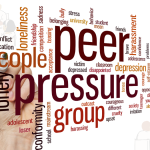The product development cycle is quite a journey. Every step from the sparks of empathy to testing, is fueled by one essential tool—user interview. This tool adapts to every stage and ensures the UX designer is on the right path.
Table of Contents
What is a User Interview?
A user interview is a research tool UX designers use to understand the behaviour, gain, and pain points of the proposed users of a certain product. These proposed users fall under the required demography and background through a one-on-one open-ended question-and-answer session.
Stages of a User Interview
-
Determine research goals and questions
The first stage of conducting user interviews is to determine the research and business goals. This will help identify your target audiences and what you intend to achieve with the research, so you can ask the best questions leading to those goals.
-
Recruit participants
This is the point where you narrow down your participants. You need to determine which of your target audiences will be recruited for the interview. Create a screener survey that will help in eliminating non-qualifiers. The screener survey can be sent to your networks, friends, families and adventurous strangers.
Are you a business owner looking to promote your business and stand out among your competitors? We’ve got back! Sponsor your business with us today at Insight.ng and get it to the next level.
-
Prepare
Even after getting the best person for the interview. The logistics must run smoothly, for a flawless user interview. The location and supplies for the interview should be ready.
-
Conduct the user interview
Conduct the interview considering all user research biases and the necessary actions to make it a success.
How to Recruit a User Interview Participant
To recruit participants for user interviews, the following should be considered:
- Create a screener survey.
- Determine research goals.
- Find potential research participants from personal networks or existing user base.
Read also: Why UI Cannot Survive Without User Research
How to Prepare for a User Interview
-
Script interview questions
Being prepared is key to unlocking valuable insights. Draft your script with questions that delve into specific user goals or pain points and explore their feelings about the product. Remember to ask open-ended questions like “Tell me about your experience with blah blah blah.” Spark richer conversations.
Don’t forget follow-ups to dig deeper and uncover hidden gems. With a focused script, you’ll turn interviews into goldmines of user feedback!
-
Gather supplies
Before the interview, assemble all the essentials. A recording device ensures you capture every insightful tidbit. Prepare your script with clear questions, and bring backup materials like prototypes or visuals for prompt discussion.
Don’t forget a notebook for capturing non-verbal cues and your thoughts. Finally, grab some refreshments to create a comfortable and welcoming atmosphere. With your toolkit ready, you’ll be primed to conduct interviews that yield valuable user research.
-
Research the user’s background
Step into your user’s shoes before your user interview, by doing a quick background check. Peek at their social media or blog, if publicly available to get their interests and passions. Check out their online reviews or social media engagements to get a sense of their opinions and tech savviness.
This intel helps tailor your questions, anticipate reactions, and build rapport, which will make your interview a personalized journey and not just a generic one. Remember, understanding their world unlocks richer insights for yours!
-
Practice the interview questions
Practice your questions, but feel them and not just say them. Imagine the conversation, your genuine interest in their stories. Picture their answers and the surprises they might hold. This quiet practice builds your confidence and your voice. Keep in mind that you’re not just an interviewer. You’re a host, ready to hear their unique experience.
Read also: How to Become a Product Manager in Nigeria
How to Carry Out the User Interview
-
Welcome and thank the participant for coming
Warmly greet your participant. Start with a genuine smile and introduce yourself by name and role. Thank them for their time and interest. Mention something specific about their background and why their participation matters.
Set the stage by briefly outlining the interview’s purpose and flow, making it clear and comfortable. Remember, this is the first impression, so make it welcoming and open.
-
Build rapport
Break the ice and connect with participants. Ask lighthearted questions about their day or something related to the interview topic. Find common ground, share a personal anecdote, or listen actively to their stories.
Show genuine interest and respect their opinions. This creates a comfortable space for them to open up and share their true thoughts and experiences. Remember, rapport is like a bridge, letting you cross over to deeper insights during user interviews.
-
Get basic information
Start with basic questions. Ask simple questions to gather essential information like their name, profession, and experience with the product or topic you’re discussing. This helps tailor the interview and provides context for their responses.
Keep it light and informal, using open-ended questions like, “Tell me about your day” or “How did you first get involved with the product?” Remember, these initial steps lay the foundation for a deeper conversation.
-
Record interview
Before diving in, ask interview participants if you can record the conversation. Explain how it helps capture their valuable insights accurately and allows you to revisit details later. Choose a recording method they’re comfortable with, like a phone app or a dedicated device. Remember, clear audio is key, so test the equipment beforehand. Once they agree, hit record and let the conversation flow!
-
Highlight important quotes
Pay close attention to those golden moments! As your interview unfolds, keep an ear out for quotes that shine. These are the nuggets, the powerful phrases that capture their feelings, needs, and pain. Jot them down quickly, or mark them in your recording for later review.
These highlights will be your treasure trove, the key pieces to build your analysis and understand their perspective. Remember, simple and impactful quotes often hold weight.
-
Document observations of participants
Watch and don’t just listen! Beyond their words, note their body language, facial expressions, and any unspoken reactions. Do they hesitate before answering? Do their eyes light up when discussing a specific pain point?
Write down these observations alongside their spoken words. These non-verbal cues can reveal hidden emotions and motivations, adding depth to your understanding. Remember, even a nervous laugh or a sigh can whisper volumes.
Read also: Product Life Cycle Simplified: Stages and Examples
-
Ask open-ended questions
Skip the yes-or-no questions and embrace open-ended questions as your conversation starters. Ask “why,” “how,” and “tell me more” to encourage them to share their full stories, not just quick answers.
Think of yourself as a curious friend, not a quiz master. Let their thoughts flow freely, and follow their lead to explore unexpected directions. Remember, the most valuable insights often hide behind these prompts.
-
Listen actively
Give your interview participants full attention, not just your ears. Lean in, nod, and make eye contact to show you’re engaged. Put away distractions and focus on their every word. Ask clarifying questions to show you understand, and repeat key points to confirm your understanding. Remember, active listening isn’t just waiting for your turn to talk, it’s building a bridge to their world.
-
Speak clearly and simply
Avoid jargon and fancy words. Speak clearly, using language they understand. Keep sentences short and questions direct. Avoid technical terms or acronyms unless you explain them initially. Imagine you’re explaining something to a friend, not giving a lecture. Note that clear communication builds trust and helps to avoid misunderstandings during user interviews.
-
Thank the participant
As much as you thanked the participants at the beginning of the user interview, do well to thank them again at the end. It makes them feel acknowledged and their time has not been wasted.
Subscribe to our newsletter. Let’s update your inbox with more business and career insights.
Conclusion
User interviews stand as the cornerstone of product development, guiding each phase with invaluable insights. From setting clear research goals and recruiting the right participants to meticulously preparing and conducting the interview, every step is crucial.
Remember, user interviews are not mere Q&A sessions; they’re personalized journeys into the user’s world, where every gesture and word speaks volumes.
Edited by Priscilla Ajayi.
About Author
- Oyinade Afe is a versatile writer, designer, and filmmaker with a passion for telling stories. With more than 3 years of experience in content writing, she excels in crafting compelling narratives, visually stunning designs, and producing engaging films. Oyinade is dedicated to authenticity, creativity, and inspiring others through her work.
Latest entries
 LifestyleFebruary 7, 2024When to Consult a Financial Advisor to Manage Your Earnings
LifestyleFebruary 7, 2024When to Consult a Financial Advisor to Manage Your Earnings Business InsightsJanuary 8, 2024How to Conduct a User Interview for a Product: From Preparation to Execution
Business InsightsJanuary 8, 2024How to Conduct a User Interview for a Product: From Preparation to Execution
 LifestyleDecember 1, 2023Peer pressure Among Nigerian Youth: The Good and Bad
LifestyleDecember 1, 2023Peer pressure Among Nigerian Youth: The Good and Bad

